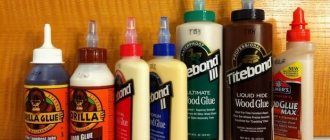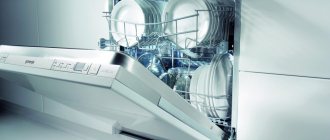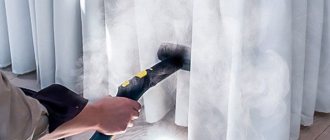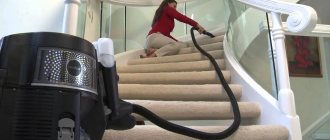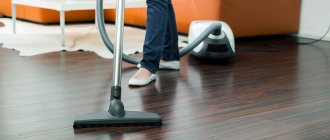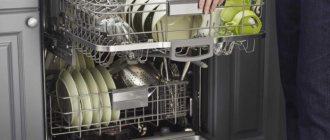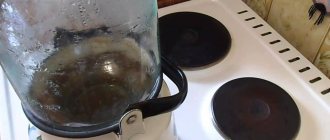Water coolers have become an integral part of our lives. Nowadays, devices are used not only in offices, but also at home, as they allow you to instantly get cold or hot drinking water. But if you use the cooler for several months, you may feel that the taste and smell of the water have changed for the worse. The water manufacturer or supplier should not be blamed for this. In this article, we will show you how to disassemble a water cooler to clean the internal parts.
Adviсe
- Before disassembling and lubricating the cooler, blow it out and clean it from dust.
- Remember the sequence of steps so that there are no problems during assembly. Take photos of each stage. Leave notes with a marker.
- When choosing a lubricant, consider its refractoriness and ability to create an oil film. Compare the characteristics of several lubricants and choose the best one. Read the latest reviews on specialized forums. The manufacturer can change the characteristics by updating the range.
- Clean and lubricate the fan regularly, otherwise it will fail and require replacement.
If you have read the article to the end and still have doubts about the need for this procedure, perhaps they are justified.
Only good, expensive coolers are worthy of washing and rebuilding. Sometimes it's better to buy a new fan if it costs less than your time. Source
Products on promotions
Special price
valid when ordering on the website until 01/13/2020
Left to finish:
Drinking water in Rostov-on-Don
Still haven't decided where to order water delivery?
We always have a large assortment of drinking water 19 liters for every taste:
- from an artesian well in the Rostov region: Lux and Source.
- for children, adjusted for mineral and salt composition: Solnyshko and Children's Source.
- melted and mineral, bottled in the foothills of the Greater Caucasus Range: Mountain Spring, Sofia Glacier, Mountain Peak, Pilgrim and Arkhyz.
We are opening new stores selling water, coolers and pumps in various areas of the city.
We are easy to find in the Center and Aleksandrovka, on the Western and Northern residential areas, on Madoyan, Vavilov, Chkalovsky, Dnepropetrovsk, in Nakhichevan and Temernik, on Leventsovka and in the Suvorovsky district.
Cooler circuits
The design and design of the cooler depends on its type and purpose, as well as on the water filtration technology.
Flow cooler diagram
A flow-through water cooler consists of a four-stage filter, an ultraviolet lamp, containers for hot and cold water with corresponding elements (heating and cooling). The use of a large number of filters and a UV lamp is due to the fact that the water supply system (pipeline) is used as a water source. They interfere with the reproduction process of viral and bacterial particles.
The flow cooler has a four-stage filter and an ultraviolet lamp, which are necessary for the preliminary purification of tap water.
The compressor cooled cooler consists of the following components:
- sediment filter (Sediment Filter) - purifies water from 90% of suspended particles larger than 5 microns; The sediment filter traps all foreign particles larger than 5 microns
- carbon pre-filter - removes chlorine and organic chemicals, and also improves the taste of water; The carbon prefilter is used to remove chlorine and various organic impurities
- ultrafiltration filter (UF Membrane Filter) or reverse osmosis membrane (RO Membrane Filter) - purifies water from bacteria, viruses, fine particles, dissolved minerals and salt crystals; Ultrafiltration filter purifies water from viruses, dissolved minerals and salts
- Post Carbon Filter - removes odors, tastes and organic substances remaining after passing through a reverse osmosis membrane or ultrafiltration membrane;
- containers and taps for supplying hot and cold water;
- compressor - creates the pressure necessary to convert the refrigerant into liquid and its further evaporation with the absorption of excess heat; The cooler compressor performs the same functions as in the refrigerator, ensuring the evaporation of the refrigerant
- booster pump - sets the pressure to ensure optimal system performance. A cooler with a compressor cooling system consists of a four-stage filter, a compressor, a booster pump and pipes through which the refrigerant circulates
Choosing a drinking cooler is a rather important step, since the quality of water, and accordingly, people’s health, will depend on its type and design. When choosing a cooler, you should focus on the following characteristics:
- Device size.
- Filtration technology. The most preferable would be a device with a multi-stage water purification system.
- The presence of an ultraviolet lamp, especially if children are expected to drink the water.
- The temperature of the water inside the device. It is better if it is +98 o C for hot water and +4 o C for cold. An additional advantage will be the ability to regulate the temperature.
- Availability of additional functions: child protection, dispenser, timer (programming the cooler to automatically turn on/off).
Operating principle description and diagrams
The cost of tap water (from a city system, an independent well or a local well) is much lower than that of bottled water, which allows for significant savings. In addition, running water is always available, without interruptions, this is a significant plus if a large number of people actively use the cooler. In order for water to flow into the purifier in a continuous stream, a polypropylene tube 6 mm in diameter is connected to the water supply through a tee with a tap.
Through this tube, water enters the cooler and passes through filters (replaceable cartridges of the same size). Next it is sent to the standard water distribution scheme.
At the outlet of a flow cooler, like a regular one, there are two taps: for cold and hot water. If you wait for the water to gravity fill the cup, it will take an annoyingly long time. To increase the comfort of using the device, the developers installed a compressor, thanks to which water flows from the taps under pressure and quickly fills the cups.
It is also important that the water enters the cooler under sufficient pressure, otherwise the cooling and heating equipment may break. Neither abnormally low nor abnormally high inlet pressure is acceptable.
How is the water heated in the device?
From the head compartment, water flows into tanks for heating and cooling as needed. This happens automatically when pressure sensors are triggered after a certain volume has been lost. This happens differently in different cooler models. Also, a constant temperature is automatically maintained in the “cold” and “hot” tanks, which is set by the owner of the cooler.
Heating is carried out by an electric heating element built into the cooler, just like any electric kettle or electric boiler works. But relative to the “hot” tank, the heating element can be internal or external.
How the water in the device is cooled
Water is cooled in two ways: compressor or electronic. In the first case, the system works exactly the same as in household refrigerators. The refrigerant circulates in a closed circuit, quickly cooling the water. In coolers it is environmentally friendly and does not destroy atmospheric ozone. Capacity: cooling to 4-50 C 2-12 liters of water at room temperature per hour.
At this stage, a compressor is included in the water preparation process, which increases the water pressure. The cooling device in the water cooler is the same as in household refrigerators, with a pump and without a fan. Such coolers are the most powerful and expensive, because... Compressor cooling is much more efficient than electronic cooling.
The general working circuit of a cooler with electronic heating/cooling rests on two plates that act as semiconductors. When current passes through them, one plate heats up and the other cools. The cold plate slowly cools the water, and the heated plate is cooled by a fan.
Algorithm - how to disassemble a water cooler yourself
Disassembling the device will not be difficult. The main thing is to strictly follow the established sequence of actions and not scatter the parts, but carefully place them side by side so that there are no problems during assembly later.
Since the cooler is a household electrical appliance, before disassembling it, first of all you need to make sure that it is disconnected from the network.
Any analysis begins with removing the top cover. To do this, you need to remove the screws with a curved screwdriver. You are unlikely to need to completely disassemble the cooler, so first diagnose the reason why you need to do this, and then get down to business in accordance with the algorithm. Typically, analysis must be carried out in case of the following malfunctions or prevention:
Descaling
To do this, all your attention must be directed towards the water heating tank, which is usually located at the top of the device. First of all, remove the drain plugs (depending on the model, their number varies from one to two) and drain the remaining water
Use wrench No. 15 to remove the rubber seal, and from under it, use a small shaped screwdriver to unscrew four screws. Then the power and grounding wires are removed, and then the temperature sensor. Next, you can dismantle the water heating tank. For preventive purposes, the presence of thermal paste is checked; if it is missing, it is applied in a thin layer. Often, the water heating tank is wrapped in fiberglass for insulation purposes; this must be removed for further work. Afterwards, we remove the lid itself from the container (this may require biting off the retaining clips).
Checking or repairing the heating element. Externally it looks like a metal spiral. It is located inside the water heating tank, so you can check it during preventative descaling. First, it is removed and subjected to visual inspection for the presence of microcracks. If they are absent, the operating resistance of the heating element with the passport data is checked with a multimeter.
If there are no deviations or the cleaning was successfully carried out, then the cooler is assembled in the reverse order.
Instructions
When the preparatory stage is completed, they proceed directly to cleaning. It includes several steps that must be performed in strict order:
- The cooler must be de-energized.
- Remove the bottle.
- When the water in the device cools down, it must be drained. Taps are used for the bulk of water. Then open the valve and drain the remaining water. The valve is usually located on the side or bottom of the appliance. It is better to find its location in advance. It is recommended to rock the cooler from side to side to remove all the liquid to the last drop.
- Remove all elements. The first step is to disconnect the drip tray. Next are the taps.
- After this, you need to examine the structure, since a screwdriver may be needed to dismantle some elements.
When the cooler is disassembled, its parts are cleaned. It includes 3 types of work:
- sanitation;
- descaling;
- rinsing.
Sanitation
It is also called disinfection. Its purpose is to remove bacterial plaque from the walls of the elements and disinfect them.
It is convenient to place the elements of the device on a liquid-repellent mat. Begin work by cleaning the external surfaces. To do this, you will need a soft foam sponge and dishwashing detergent. Next, using a citric acid solution, wash all internal parts and removable parts. To clean hard-to-reach places, use a brush.
The disinfection solution must be poured into the water tank. To carry out this manipulation, you will have to remove the bottle receiver by turning it counterclockwise. The tank should be full. Check the filling by opening the taps. If everything is done correctly, the water will flow in a continuous stream. In this position, the tank is plugged in for 10 minutes. The heated liquid will remove remaining impurities invisible to the eye. After the time has elapsed, the device is turned off. Drain the solution. And repeat the procedure a couple more times.
If it is not possible to use the electrical network, the solution can be left in the tank for up to 6 hours and then drained.
Descaling
If the scale is insignificant, then it can be dealt with already at the first stage by using a solution of citric acid.
A more aggressive method is to use vinegar diluted with water. It is also poured into the tank and left there for 15 minutes. Next, plug the device into the network, wait for the water to boil, and turn it off. After these manipulations, the solution must be left in the tank for 5 hours.
In the most advanced cases, chemical agents will come to the rescue. Any product for descaling teapots will do. The powder must be dissolved in the required amount of water (indicated on the instructions). Fill the tank with the solution and connect the cooler to the network. After boiling, wait 20 minutes and drain the solution.
Cases of contamination can be so advanced that even the fan in the device is damaged by scale. Only replacing parts will help here.
Rinsing
The final stage. It is necessary to clean the cooler of any remaining solutions that were used for cleaning. This step should not be neglected, since not removed drops of the cleaning solution can subsequently penetrate into the water, and with it into the human body. For rinsing, use ordinary water. It must be poured into the tank. Connect the device to the network and boil the water. The water must remain in the tank for some time. It is best to leave it for several hours, such as overnight. Then the water must be drained through the taps. This procedure can be repeated 3-4 more times. When boiling again, the water can be drained after a quarter of an hour.
When rinsing, it is important not to forget about the removable elements. They are also immersed in clean water and washed
Sanitizing the cooler from germs:
This procedure is best performed before loading a fresh bottle of water.
- First of all, turn the switch to the Off position. (OFF) and unplug the power cord from the outlet. Wait 10-15 minutes for the hot water in the tank to cool down.
- Remove the water bottle and unclip the wall holder from the back of the cooler. Turn the back of the device away from the wall.
- Drain the water from the cold and hot taps into clean containers. Open the rear drain holes and drain the water from them. Avoid direct contact with hot water. Keep children and pets away from the device while draining water. Place the lid and silicone stopper so that they do not get lost. Always maintain the sequence when draining: first you need to drain from 2 taps, then from the drain hole. For desktop coolers, the drain plug is located at the bottom of the cooler. Electronic coolers have two drain plugs on the back of the cooler.
- Remove the water inlet (bottle inlet) by turning it counterclockwise. Add water to the top of the reservoir. It is recommended to do a full cooler cleaning with the bottled water you drink. If you don't have that much water available, you can use tap water.
- Add 50 ml of Cryodez disinfectant (or soda per 1 tbsp. 1 tsp or other product) to the tank. Open the taps to fill the tank faster. When water comes out of the taps in a continuous stream without air, the tanks are completely filled. You can close the taps.
- Mix the water in the tank with Cryodes. Leave the product in the disinfection tank for 30 minutes. You cannot remove the taps at this time, since the tank is filled with water. Otherwise, water will flow out of the taps along with the disinfectant.
- Using brushes and brushes, clean the internal parts of the water inlet, the separator (separator), the cooling tank and the water courses at the bottom of the tank.
- Every 10 minutes, pour water into a glass and pour it into the reservoir. So 3 times in 30 minutes. Five glasses of 200 ml or one liter mug.
- Then drain the disinfectant solution.
Washing removable parts
Now you should rinse the removable parts of the cooler (after disinfection, you can rinse the water inlet; after complete descaling, you can rinse the taps, pipelines, and drip trays). The pipelines are located between the tank and the taps. The taps are unscrewed counterclockwise.
Remove the pipelines. Wash them with a sponge and brush with dishwashing disinfectant and rinse with water
Then put them in place. Attention! When removing the tap, you should keep in mind that taps in coolers come with external threads and internal threads. With the latter option, the taps are removed after disassembling the cooler. The water inlets for some coolers may consist of 1 part, for other models - of 5 parts.
After disassembling the faucet into parts, wash it with a brush and a disinfectant detergent.
It is also necessary to clean the waterways of the faucets on the cooler.
Clean the front panel of the cooler housing (under the taps). Mister Muscle can be used as a disinfectant detergent. You must not scratch the faucet inside or outside, as the inside of the faucet can be damaged and water will leak from it. On the outside, scale will settle faster at the scratch site. Before putting the taps in place, you should wrap fum tape around the threads of the taps. If this is not done, water may leak through the threads.
Water regularly leaks and drips from the faucet
Regular leaks are often associated with damage to the water container. Microcracks on the body are practically invisible visually. To determine the cause of the leak, it is recommended to perform the following actions:
- on the rear wall of the unit, turn off both toggle switches;
- disconnect the device from the power supply;
- remove the water bottle;
- unscrew the plugs on the drain valve;
- drain the remaining water;
- replace the plugs and close the taps;
- install a new water tank;
- check tanks and locks for leaks.
If, while checking the operation of the unit, water continues to drip or flow out, it is necessary to check the drain plug for leaks and look for other causes of the malfunction. The service center is contacted when no possible faults are detected, the entire module needs to be replaced, or the fault cannot be eliminated on its own.
Cooler is leaking
- In 95% of cases the problem lies in the bottle itself. Cracks in the bottle
lead to an imbalance in the cooler's hydraulic system, which is why water leaks. It may seem to you that water is flowing from the bottom of the cooler - this is true, with this problem it flows through the entire cooler and spills onto the floor. This problem can sometimes not be diagnosed simply by visual inspection - try installing another bottle and checking if the leak is fixed. - The problem may also be that the drain plug
on the rear panel of the cooler is not screwed on properly. Try tightening it more tightly or purchasing it and replacing it with a new one. - One of the silicone
supply or outlet tubes is leaking. For diagnostics, unscrew the back panel and check the integrity or tightness of the tube connections. If there are cracks, you can buy and replace the tubes yourself. - If you have a cooler with water supply by pressing with a cup, then check to see if the part above the lever has unscrewed, or if cracks have appeared in the plastic
. Check for cracks both outside and inside, under the panel. - Check the heating tank or cold water tank
. If there are drops on them and water collects from below, then you should contact a specialist to replace the necessary spare part.
Often when there is a problem, they try to find other reasons, where it is written exactly that the cooler is leaking from underneath. In case of any breakdown accompanied by a leak, the cooler will leak from BOTTOM, since water flows downwards - this is physics J. Your task or the task of the master is to determine where the leak begins, and not where it leads.
How to disassemble a water cooler
The algorithm for disassembling dispensers is as follows:
- Use a figured screwdriver to unscrew the screws.
- The back cover is removed.
- The device is inspected internally to determine if there is a malfunction.
- If the water heats up weakly, inspect the metal tank with hot water (at the very top of the device) for scale deposits. To do this, first unscrew the drain plugs located at the bottom of the tank, at the back, so that the tank is free of water. There may be two traffic jams, but there may also be one.
- Using a small curly screwdriver, unscrew the 4 screws under the seal.
- Next, use wrench No. 15 to remove the rubber seals.
- Using pliers, cut off the clamps from the pipe and other connecting pipes.
- Electrical and grounding wires are disconnected after unscrewing the screws.
- The temperature sensor is disconnected from the tank.
- The tank is removed.
- The condition of the thermal paste is checked and, if necessary, applied in a thin layer.
- If there is a fiberglass insulation coating, it is removed, after which the tank is cleaned inside.
- If the heating tank is in order, inspect other components and connections.
What bearings are used on power supply fans?
Fans use different types of bearings with different mechanical life and noise levels. The characteristics of rotating units are tabulated in order of increasing cost (starting with the cheapest).
Obviously, neither the resource nor the noise directly depends on the cost of the node. You can choose a cooler of a suitable price for specific purposes with the required characteristics.
Cleaning a water cooler: subtleties and nuances
Before you begin processing yourself, you must take into account that this procedure requires the allocation of free space and takes quite a lot of time. Therefore, it is necessary to prepare in advance a clean bowl for rinsing “trifles”, a soft lint-free cloth, a brush (or a clean toothbrush), and detergent (Mr. Muscle will do for a start). It is advisable to carry out this procedure in the intervals between replacing the container - this will reduce the likelihood of bacteria getting inside again.
The presence of foreign substances on structural elements leads to their coarsening and shortening their service life.External sanitization
First of all, you need to disconnect the dispenser from the electrical network, then remove the bottle and drain the water. Since disassembling a water cooler with your own hands does not involve any particular difficulties, all external elements must be dismantled: the drip tray, decorative panels (if any), as well as the neck opening with a needle for water supply.
Bacteria, getting inside the bottle and settling on the walls of tubes and other elements, can cause serious harm to human health.
All external surfaces should be thoroughly wiped with a soap solution, to which you can add a little iodine or ammonia
In the latter case, it is advisable not to forget about precautions. It's not just the front that needs a thorough cleaning - the back and even the power cord also need a good cleaning.
Sanitizing any cooler is a mandatory event that must be carried out periodically with your own hands or with the involvement of professionals.
Cleaning the cooler: washing removable parts
All removed parts can be washed in a bowl of cleaning solution (or dishwashing detergent). In this case, before rinsing, it is necessary to thoroughly clean the resulting deposits and accumulated dirt. For hard-to-reach places, it is better to use a special brush or toothbrush.
Please remember that plastic parts must not be rubbed with scrapers or a metal sponge!
As an additional measure, you can spray the removed parts with a disinfectant solution and leave them there for 10-15 minutes. This procedure should be performed after primary processing. In most cases, washing a water cooler at home requires following a simple rule - it is better to put the cleaned parts separately.
After washing, they should be handled with rubber or disposable gloves.
Processing of internal parts
Deep cleaning of the dispenser is carried out using a previously prepared solution. For this purpose, both special products produced by industry and the usual ones can be used: vinegar or citric acid. Typically, cleaning a cooler is carried out in two stages:
- Disinfection and descaling.
The prepared solution is poured into storage containers until they are completely filled. In this case, both taps are left open to remove air pockets and allow the cleaning liquid to fill all water supply channels and pipelines. Remove the bottle receiver - the device is unscrewed, and citric acid diluted with water is poured into the resulting hole.
After this, you need to turn on the dispenser and wait until the heating indicator goes out. Then, at intervals of 10 minutes, you need to drain a glass of water, alternately from each tap. The drained water returns back to the cooler. The recommended duration of the entire procedure is about half an hour.
Washing. At this stage, you should thoroughly rinse all internal parts that came into contact with the solution. To do this, you need to carry out a final spill with four times the volume of a standard 19-liter bottle. Despite the fact that flushing a water cooler at home requires significant excess water consumption, it is prohibited to use city water supply as a source!
Pour part of the disinfectant solution into the water tank, leave it there for 10 minutes, then drain through the taps.
Additional cleaning
The final stage of cleaning is washing and disinfecting the internal removable parts that are in direct contact with water: plastic tubes and lines, taps, separator, as well as all kinds of holders.
When using any detergents, pay attention to the instructions supplied with the device. Not every model can be treated with universal tools
It should be remembered that some cooler models allow the installation of taps with internal threads - you need to be careful when dismantling them. Otherwise, cleaning is carried out using the surface washing method described above.
If you wash the device regularly, severe contamination will be avoided.External cleaning
After the water has been completely drained from the device, you can begin the cleaning procedure. It is recommended to start by removing contaminants located on the outer surface.
To treat parts, you can use dishwashing detergents, soap and other solutions (for example, with the addition of iodine or ammonia), as well as special substances for cleaning the cooler.
It is recommended to use the following tools and additional equipment:
- waterproof mat;
- container for collecting water;
- soft brush or sponge for washing;
- a small brush for cleaning taps and pipes (can be replaced with a wire with cotton wool);
- dry lint-free cloth;
- latex gloves.
First of all, start cleaning the taps. They are dismantled and thoroughly washed outside and inside using special brushes.
Dismantling and cleaning the taps is one of the main stages of comprehensive device cleaning
The next step is to clean the receiver to collect residual liquid (drip tray). This is where a large number of microbes accumulate. Afterwards, the body is washed and the area where the bottle is attached is sanitized.
After the bottle receiver is removed, access to the tank will open, at the bottom of which there is a divider. It also needs to be dismantled and washed well, first with a soapy solution, then with clean water.
When all components are cleaned, the previously dismantled parts must be reassembled in reverse order. Then wipe the body again with a damp cloth, and so that there are no streaks left, wipe it with a dry one.
The video also demonstrates how to disassemble the device and sanitize it at home:
How to choose a lubricant for a cooler?
For coolers, it is necessary to use inert organic silicon, that is, silicone grease or a mixture of silicone + Teflon.
The best option is to use silicone lubricant from the manufacturer. It lasts about 4-5 years and then dries out.
Branded MX-4 lubricant in a syringe
If such a lubricant is not available, Litol-24 will do. This is a refractory lubricant that is not afraid of heat.
The third option is solid oil. The principle of action is the same.
Synthetic or semi-synthetic engine oil creates a surface film at any temperature. As a result, there is less noise and almost no wear. Motorists usually have leftovers in cans in the garage. But it is best to use it together with Litol-24.
WD-40 is well suited for lubricating non-separable coolers. The tube attached to the can can be conveniently inserted into the gap between the body and the impeller. Adhere to the following rules:
- Insert the tube as deeply as possible so that the lubricant (at least partially) penetrates the bearings and does not spray all over the gap.
- When inserting through the gap between the impeller and the housing, do not use much force to avoid damaging the parts.
- If after this procedure the problems remain (noise, “wedge”), repeat the process.
Why doesn’t my computer or laptop turn on after the procedure?
Sometimes after you have cleaned the cooling device yourself, the device itself refuses to start.
This happens for two reasons:
- Incorrect assembly.
- Damage to contactors and wires.
Try to disassemble it again for initial diagnostics. Check if everything was assembled correctly.
Why did the fan start to chirp?
It's worse when all the components are working, but the annoying noise has not disappeared. On the contrary, it is intensifying. This also means that you made a few mistakes during assembly. Most likely the impeller blades are touching the housing or radiator. Often they touch the power wires in some way.
Try to hang it evenly.
Algorithm - how to disassemble a water cooler yourself
Disassembling the device will not be difficult. The main thing is to strictly follow the established sequence of actions and not scatter the parts, but carefully place them side by side so that there are no problems during assembly later.
Since the cooler is a household electrical appliance, before disassembling it, first of all you need to make sure that it is disconnected from the network.
Any analysis begins with removing the top cover. To do this, you need to remove the screws with a curved screwdriver. You are unlikely to need to completely disassemble the cooler, so first diagnose the reason why you need to do this, and then get down to business in accordance with the algorithm. Typically, analysis must be carried out in case of the following malfunctions or prevention:
Descaling
To do this, all your attention must be directed towards the water heating tank, which is usually located at the top of the device. First of all, remove the drain plugs (depending on the model, their number varies from one to two) and drain the remaining water
Use a #15 tool to remove the rubber seal, and from under it, use a small shaped screwdriver to unscrew four screws. Then the power and grounding wires are removed, and then the temperature sensor. Next, you can dismantle the water heating tank. For preventive purposes, the presence of thermal paste is checked; if it is missing, it is applied in a thin layer. Often, the water heating tank is wrapped in fiberglass for insulation purposes; this must be removed for further work. Afterwards, we remove the lid itself from the container (this may require biting off the retaining clips). Checking or repairing the heating element. Externally it looks like a metal spiral. It is located inside the water heating tank, so you can check it during preventative descaling. First, it is removed and subjected to visual inspection for the presence of microcracks. If they are absent, the operating resistance of the heating element with the passport data is checked with a multimeter.
If there are no deviations or the cleaning was successfully carried out, then the cooler is assembled in the reverse order.
How to perform a hygiene procedure inside
Before washing the cooler, you will need to first prepare a cleaning device for this. To do this you need:
- De-energize the purification system.
- Remove the cooler bottle.
- Completely remove the liquid, this must be done as carefully as possible so that not a single drop remains.
- Disassemble the purification system into separate parts. Their composition and quantity may vary depending on the model of household appliance.
- If you have fasteners, you will need to arm yourself with a screwdriver.
Cleaning and disinfection from the inside
The first step in cleaning a household appliance at home is to carefully treat its external elements. First, you will need to place the cooler on a pre-prepared mat, then successively walk over the contaminated surface with a soft sponge with dishwashing gel. After external cleaning, you can begin washing the internal elements. To do this you will need to do the following:
- Wear protective rubber gloves.
- Dissolve fifteen grams of citric acid in a glass of clean warm water.
- Using the resulting active liquid, carefully walk through the internal elements with a stiff brush, trying to clean all the hidden corners. If this is difficult to do, you can use a regular toothbrush. For hygienic reasons, it must be new.
- Next, you will need to prepare a similar solution with citric acid, only in larger quantities to completely fill the water tank. After filling the container, you will need to connect the cooler to the power supply and wait ten to fifteen minutes. When the device heats up, stubborn contaminants will dissolve.
- If necessary, you can clean the interior surfaces several times.
It should be noted that instead of cleaning the cooler at home, you can clean it using specialized household chemicals, for example, CoolerClean or BIOR-1.
Descaling
If using the previous method did not help descale your household appliance, you will need to prepare a stronger cleaning agent. To do this, you will need to mix water with nine percent table vinegar in a ratio of five to one. To put the internal elements of the cooler in order, you need to do the following:
- Fill the tank with the resulting solution.
- Wait fifteen to twenty minutes for a more intense effect.
- Connect the device to the power supply and boil water.
- After a few hours, remove the liquid using both hot and cold water taps equally.
It is worth considering that if scale has spread to the fan, it will not be possible to clean the device at home.
Cleaning removable parts
All detachable elements of the cooler must also be thoroughly cleaned. This is quite easy to do. You just need to apply a little dishwashing gel, for example, Sorti or Fairy, onto a soft sponge, and carefully process all removable elements. Then rinse with clean water and wipe dry with a kitchen paper towel.
Rinsing
When the cooler has undergone the necessary treatment and is completely cleaned, you will need to get rid of the remnants of active cleaning agents. To do this you need to do the following:
- Fill the tank with clean water, not from the tap.
- Boil the poured liquid.
- Wait twenty to thirty minutes.
- Remove water using taps.
It is advisable to carry out a similar procedure three to four times to completely clean the cooler of any remaining chemical compounds. Otherwise, users of the purification system may experience serious health problems.
Recommendations for further use of the cooler
To avoid the need to carry out preventive cleaning of the cooler more often, it is important to consider the recommendations for its operation:
- Before each bottle change, you should thoroughly wash your hands with soap.
- The protective film and label must be removed from a new bottle to prevent debris from entering the reservoir. You also need to wipe the surface of the container with a damp cloth so that less dust gets into the bottle receiver.
- It is necessary to empty the liquid from the pan daily and wipe the taps at least once a week.
Never use tap water! The cooler does not have a filter, so if you fill it with untreated water, scale will form on the heating surfaces faster. Also, untreated water may contain a large number of potentially dangerous microorganisms. They will not only accelerate the process of biofilm formation on the internal walls of the device, but can also cause a deterioration in the taste of drinks and even poisoning.
Why is cleaning necessary?
Failure to timely clean the cooler can not only lead to damage to the device itself, but also harm human health. Over time, a biofilm inevitably appears on the inner surface of any container, which contaminates the water with dangerous microorganisms, which causes an unpleasant odor and taste. Also, scale forms in the heating container, leading to the appearance of a yellowish sediment.
If the device is not cleaned in a timely manner, its performance will decrease:
- water from the tap flows worse or stops flowing altogether;
- the cooler “boils” without ceasing;
- The device may completely fail.
If the owner notices at least one of the signs listed above, it is recommended to immediately clean the cooler.
Weak water pressure from the tap indicates that the device needs cleaning
How to clean a water cooler yourself
Before starting work, read the operating instructions. For different models, some manufacturers' recommendations may differ, although the general principle of washing is the same for all.
- Disconnect the electrical appliance from the network.
- Remove the empty bottle.
- Make sure the hot water has cooled down. Then open the taps and drain the liquid into a previously placed container.
- Drain the liquid from the system by opening the special drain valves. They are located on the bottom panel or at the back of the unit.
- Cleaning is carried out with a special solution made for washing coolers. They can be purchased from the company, the supplier of the device, or in a specialized store, or you can prepare them yourself. To do this, use food grade citric acid by dissolving 100 grams of powder in 5 liters of tap water.
- Pour the solution into the cavity of the device, having first removed the bottle receiver. To remove the bottle receiver, turn it counterclockwise. Or, an empty bottle is filled with cleaning solution and attached to the device.
- Connect the equipment to the network and wait until the system is completely full. The process takes approximately 10 minutes.
It’s easy to check readiness; just open the taps. If the stream runs full, without interruptions, then the tanks are full.
- Turn on the heating function.
- After the heating indicator goes out, the switch is moved to position “0” and the cable is disconnected from the network.
- After 5 - 6 hours, the detergent composition is drained from the system by opening the taps and valves.
- Then the channels are flushed with clean water. To do this, pour 4–5 liters of liquid and drain it by opening the taps. The procedure can be repeated again.
Pure water
Recently, many people use coolers not only at work, but also place them at home. This is a completely normal solution if heavy water flows from the tap, with a large number of various impurities and minerals that the filter cannot remove. In this case, using a cooler allows you to always receive clean and fresh bottled water.
However, the water will remain this way until the cooler itself becomes dirty, so you should not wait until a green coating or white scale forms on it, you need to clean the device regularly. If you focus on sanitary standards, they advise carrying out general cleaning of the device once every six months, and you also need to wash the outer part
Particular attention should be paid to the grille at the back of the cooler, where the condenser is located. It accumulates the largest amount of dust
For home use, the optimal cleaning cycle, according to many housewives, is 1-2 months; during this time, a decent amount of dirt has already accumulated in the device, which should be removed if you do not want to drink dirty water with microbial flora. Bacteria still get into the cooler through roundabout routes, most often when installing new bottles.
Correct installation of the bottle on the cooler
To clean and wash the cooler at home, you need to decide when to replace the next bottle. We remove the empty container and do not put a new one in yet. Then you need to disconnect the device from the network and wait a little until the water in the hot liquid container cools down. We drain the water, completely emptying the device, first from the hot tap, then from the cold one.
To clean the cooler from dirt we will need the following equipment:
- dishwashing composition;
- containers for detergent composition;
- sponge and brush to remove dirt;
- rags or napkins for cleaning;
- rubber gloves to protect hands.
To wash and disinfect the cooler, you can use a composition based on a special detergent, which is sold in a hardware store, for example, the Bior brand. But at home, it is also permissible to use folk remedies, which are cheap and simple.
Citric acid does an excellent job of removing scale and disinfecting, and also has a pleasant smell and taste, so we will use it to prepare the cleaning solution. The consistency is as follows: for 5 liters of water 100 grams of acid. Check that there is no water left in the cooler system, drain it completely.
It's not a refrigerator, but it's cold
When the resistance of the temperature sensor (thermistor) drops below 33 kOhm, the semiconductor element and the cooling fan turn on.
From the cooling radiator (Fig. 4), on which the fan is installed, a coil goes into the water tank, which absorbs the cold emanating from the semiconductor element, and the water temperature drops.
In practice, this element and the fan can work for several hours in a row (especially in summer, when the ambient temperature is +25 ° C or more).
At other times of the year, as a rule, the cooler turns on automatically for a short time of 5-8 minutes.
As the water in the tank cools, the resistance of the thermistor increases. In table Figure 1 shows the resistance values of the thermistor MMT-1, MMT-4 (designation on the NTC board) at different temperatures. These parameters were established through the author's experiment.
Table 1. Dependence of the resistance of the standard thermistor on temperature
| Temperature, °C | NTC resistance, kOhm | Cooling time to +5° C, min |
| Room regular +22 | 11,8 | 8 |
| Hot summer +25 | 10 | 12 |
| Hot summer +30 | 8,2 | 25 |
| Chilled tank +5 | 33,3 | — |
Thus, the cooler automatically turns off when the thermistor reaches a resistance of 33.3 kOhm.
It is clear that in the hot summer, for hot office guys, the water temperature of +5° C may not be low enough. So, we will have to work on further cooling the water.
Rice. 5. View of the printed circuit board of the cooler temperature monitoring and control device
There are no “manual” adjustments on the board.
It would be possible to change the resistance values in the voltage divider (in the comparator arms), but, in my opinion, this path is irrational and expensive.
Option one
I recommend this as the easiest way to cooling.
Thermistor connection locations are indicated by red lines. Nearby, a circle indicates the location for connecting an additional resistor (marked on the board as RNTC, but not connected).
In order for the cooler to work longer, even after passing the +5° C threshold, it is necessary to replace the MMT-4 resistor (designated NTC) with another one: with a resistance (at room temperature) not 12 kOhm, but slightly lower - 8.2 kOhm or at least 10 kOhm.
Then, when the temperature reaches +5° C, the resistance of the thermistor will increase to 27.7 kOhm and water cooling will continue (this has been established experimentally) - until the moment when the resistance of the thermistor reaches the range of 32-34 kOhm. (there are different values as a result of the experiment). The water temperature at this moment will drop to +1° C. All that remains is to place a glass in the cooler and shudder...
Types of dispensers
Taking into account the principle of operation, equipment and size, coolers are divided into several types, each of which is suitable for use in different conditions. Models are available that supply only cold water, cold and hot, and models with liquid at room temperature. According to their design and operating principle, they are divided into:
- Floor-standing. Free-standing cabinets with a height of 80 cm or more have different designs. The model can be supplied with a bottom or top loading bottle. Floor-standing devices are characterized by high performance and functionality. They are used when chilled or hot water is needed and can operate at high speeds, which is why they are often installed in large companies.
- Tabletop. They are compact in size and have low liquid consumption, suitable for home or small offices. They are installed on the windowsill, kitchen table or countertop, as well as other surfaces. They often operate on the electronic cooling principle and do not waste a lot of electricity.
- With storage space. An additional cabinet can store dishes, cups and food. A number of models have an ozonizer in the cabinet. Ozone disinfects the surface and kills harmful microorganisms.
- With a refrigerator. The built-in chamber allows you to effectively use every part of the cooler. The compressor cooling system regularly maintains the desired temperature. Premium devices have LCD displays that display all the set parameters. A cooler with a refrigerator will be useful in the office.
- Built-in. The model saves space in the room. It can be installed in kitchen units, as well as in cabinets with a special niche. The dispenser is connected to the bottle installed behind the wall using a flexible hose. This system makes it possible to harmoniously fit the equipment into the interior.
- Flow-through. The dispenser does not need to be regularly maintained and the bottle changed. Thanks to the direct connection to the water supply, water enters the system automatically. To prevent contamination of the device and the entry of debris into the drink, the cooler has several filter elements. Therefore, it requires periodic maintenance and cleaning.
- With carbonation. The device has cylinders of carbon dioxide, which is mixed with liquid. This option is suitable for people who prefer sparkling water to regular water. The volume of the container is enough for 1000 servings.
Detailed cleaning instructions
There are several basic methods for cleaning a cooler; we list the main stages of sanitary work. This method is perfect in a situation where the water has not yet been heavily polluted. Cleaning a water cooler at home is quite simple; you just need to fulfill a few conditions. The most convenient time for professional cleansing is when the liquid runs out. Next, you need to turn off the device and give it time to cool down so as not to get burned when cleaning. Remember that you cannot turn on the device again while you are doing maintenance, otherwise you may damage the heater. Cleaning a water cooler yourself is easy and won't make you sweat at all, you just need to follow the instructions.
Preparatory work
You need to open up the product you usually use to clean dishes and mix it with water to clean the body of the appliance. It would also be a good idea to purchase citric acid; it will cope well with microorganisms and “centuries-old” plaque.
External surface cleaning
Disinfect your hands with an antiseptic, which can be alcohol, good soap, or simply wear medical gloves. Wipe the surface of the machine thoroughly with a damp cloth; it can be pre-soaked in dishwashing solution.
Pay special attention to the grille and the back of the device, you need to remove all traces of dust. After this, you should go over the body again with a dry towel.
External washing is of great importance, as it eliminates bacteria that subsequently enter the machine.
How to wash the inside
To do this, use a prepared mixture of citric acid and water in a ratio of 100 g of product per 5 liters of liquid. If you are wondering: how to clean a fan? – then there is nothing complicated, you need to thoroughly wipe it from dust. Next you need to disassemble and clean the cooler.
Cleaning, disinfection
To perform internal disinfection, unscrew the bottle receptacle counterclockwise. Pour the diluted mixture inside the device so that it fills the receiving tank. Be careful: the liquid must completely fill the tank. To do this, you need to open the taps and monitor the thickness of the jet, which should be the same as during normal operation of the cooler. If the water flow is weak, then you need to add detergent to the tank.
Scale
The method described above, that is, a solution of citric acid, will not only destroy bacteria and algae, but also rid the device of scale. To effectively remove the deposits that have formed, you should plug the device into a power outlet and wait until the water heats up. Then turn off the cooler and drain the water after five hours. How to wash the device? Quite simple: pour clean water and repeat heating, release the first batch and enjoy using it.
Cleaning removable parts
After you have managed to wash the device from the inside, you should move on to cleaning the removable parts. Remove the drip tray and taps and rinse them thoroughly. Don't be afraid to use a brush and dishwashing chemicals. After the procedure, you should wipe these elements dry and put the parts back in place. If you find it difficult to remember the location of the devices, make a note with a marker.
Rinsing
Rinse the container and equipment from the mixture or special compositions purchased in the store and intended for cleaning, fill with clean water. If you feel a sour taste, you need to repeat the procedure several more times.
Cleaning the body
The external panels of the cooler are processed in the following sequence:
First wipe the body with a damp cloth or soft cloth
Detergent can be added for disinfection purposes. Wash the back wall, paying special attention to cleaning the grille. Remove cobwebs and dust. Wipe the body with a dry cloth. Install a new bottle on the cooler
Connect the dispenser to the power supply. Check heating and cooling of water.
If the device has not been cleaned for a long time, then you can use radical methods. To do this, manufacturers have released a number of special cleaning products that can be purchased at household chemical stores. You must study the instructions and act strictly according to them. Professional products can also be purchased for internal cleaning. It is prohibited to use gasoline, acetone, kerosene, or any powdered abrasives for cleaning work. Using them, you can easily damage the enamel on the surface of the dispenser. Do not heat the device before cleaning. Damage to the heating element and tank will occur.
To what temperature does the cooler cool the water?
The reservoir of the device is divided into two halves. In one, the water can be heated to +96°C, and in the other it is cooled using a compressor or electronically using the Peltier principle. In the first case, models are produced with floor installation, and the water temperature drops to +5°C. The electronic model is compactly installed on the table, but the water is not cooled below +10°C.
The name of the device for changing the temperature of water in bottles comes from the English “cool”, which means “cold”. The first device was called a cooler because initially it could only dispense cool water. Modern equipment brings it almost to a boil and the speed of this action can compete with a kettle.
Why clean your cooler and how often should you do it?
The main factors that contribute to drinking water contamination and increase the likelihood of developing diseases:
- harmful particles enter the cooler and begin to actively multiply in a favorable environment (acceptable liquid temperature), which leads to the formation of plaque inside the walls of the device;
- Considering that one of the functions of the cooler is heating, you can expect the formation of scale on the surface of the heating element, which reduces the quality of the water;
- There may also be bacteria outside: on taps, buttons, the front panel, drip tray, from where harmful microorganisms enter the human body along with the liquid;
- There may be algae spores in the water, which is a consequence of poor water purification; as a result, the liquid begins to “bloom” - it acquires a green tint, and a coating of the corresponding color remains on the internal surfaces of the device.
If the water in the cooler has acquired a greenish tint or the flow has decreased, you need to rinse the device to remove deposits as soon as possible
Cleaning is carried out regularly when changing water manufacturer. In addition, the device must be cleaned after a long period of inactivity, as well as after completion of repair work. If the device is used regularly, dirt should be removed quite often.
The manufacturer of such equipment recommends washing once every 6 months. However, it is better to do this even more often, for example, monthly or every 3 months. As a result, the likelihood of the formation of complex contaminants is reduced. These recommendations are suitable for equipment of any brand: Bosch, Family, etc.
Internal cleaning
After the outer part of the cooler is cleaned, you can move on to removing dirt from the surfaces located inside the device. For this purpose, special solutions are used.
Citric acid based cleaning solution
One of the most effective and popular cleaning options is the use of citric acid. It allows you to soften the plaque formed on the walls of the bottle and other components of the unit, disinfect the surface, and eliminate unpleasant odors. Moreover, this substance is completely safe for the cooler itself.
To prepare the cleaning solution, take citric acid at the rate of 200 g of dry matter per 10 liters of water. The resulting product is poured into the device, after which it is plugged into the network. After heating, the cooler is turned off and left for 5-6 hours. After the specified time, the liquid is completely drained and the device is washed with clean water. If necessary, the procedure can be repeated.
A solution of citric acid copes well with scale and also eliminates pathogenic microflora that forms in the device over time
Application of polymer antiseptic
Along with the substances that every housewife has in her home, you can use a special preparation for cleaning - guanopolysept. It does not contain chlorine and aldehydes and is completely safe for humans in small concentrations.
Mode of application:
- The substance is mixed with water following the instructions.
- After preparation, the solution is immediately poured into the cooler and plugged in.
- Water is periodically drained through taps into the tank.
- In this mode, with slight contamination, the device should operate for at least a day; if necessary, the duration of cleaning can be increased.
Afterwards, the cleaning liquid is drained, and the cooler itself is thoroughly washed with water until the foreign taste completely disappears.
The video below will tell you in more detail about the main stages of cleaning the device using a soap solution and citric acid:
Why is the cooler tap leaking?
Push-in taps often fail due to deformation and cracking of the silicone seal. Intense loads lead to rapid wear of the locking element. Most often, mechanisms for hot water break down, as well as plexiglass rods. When worn, defects in the form of discoloration of the plastic, cracks and other damage are visible on the body. The faucet on the water cooler needs to be replaced. Reasons for leakage include:
- scale from the heating tank getting onto the gasket;
- unwinding of the part, which occurs with frequent pressure with a glass;
- cracking of the body, rod, deformation of the gasket.

